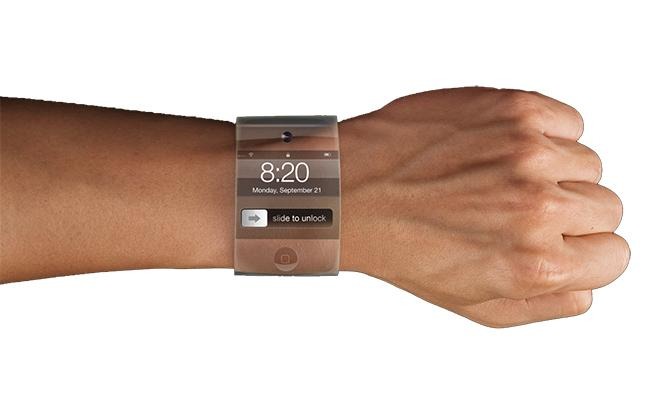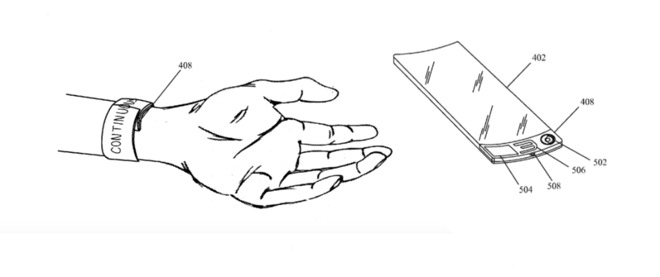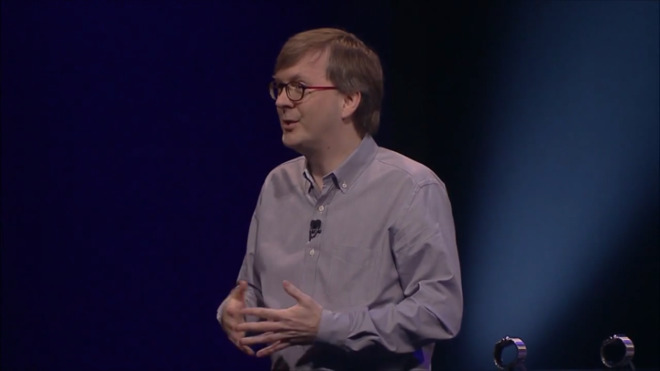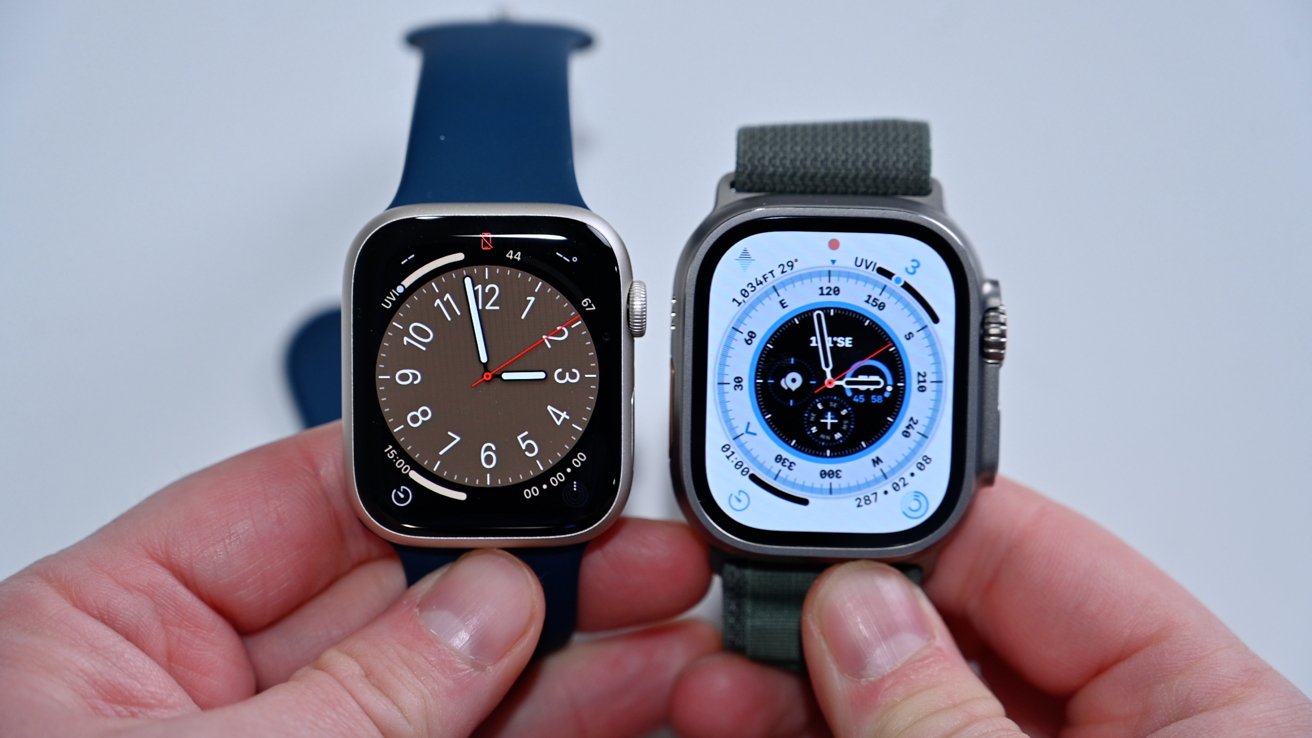Apple Watch was launched ten years ago on September 9, 2014
It feels like we've always had Apple Watches, but even a decade after its announcement, it's also still a product that feels new. Yet as well as all these years it's been on sale, you can trace rumors of Apple's work on it back at least another five to around 2010.

It feels like we've always had Apple Watches, but even a decade after its announcement, it's also still a product that feels new. Yet as well as all these years it's been on sale, you can trace rumors of Apple's work on it back at least another five to ar
Shortly after the Apple Watch was released, someone drew a timeline of human civilization since the industrial revolution. For the giant majority of the timeline, people wore watches, it said.
And now for the rest of time, people will wear watches. But there was a gap in the middle representing about 2007 to 2015, in which the watch was gone, replaced by the iPhone.
It really did seem as if no one needed or wore watches anymore, not when we were all constantly looking at our phones.
Yet, a decade after it was announced on September 9, 2014, Apple Watch is now everywhere. And instead of just telling us the time, Apple Watch has been genuinely saving lives.
It was a long road from idea to product, though, and then it also seemed to be quite another long road before anyone realised just what the Watch was good for.
Back to the start
You can easily trace back rumors to 2010, though it's harder to be sure when those rumors changed from people's wishful thinking and instead became an actual Apple research project.
Speaking in 2018, Apple's chief designer Jony Ive said that the Apple Watch project didn't begin until after Steve Jobs had died. "The first discussion took place in early 2012, a few months after Steve's passing," he said. "It caused us to take time, pausing to think about where we wanted to go, what trajectory we were on as a company, and what motivated us."

Everybody tried mocking up what an "iWatch" would look like. This one is by Yrving Torrealba in 2014
Only, back in December 2011 -- two months after Jobs died -- the New York Times claimed that Apple had already been working on a watch for some time. After saying that both Google and Apple had been researching wearable computers "over the last year," writer Nick Bilton got into some detail that now sounds accurate.
"A person with knowledge of the company's plans told me that a 'very small group of Apple employees' had been conceptualizing and even prototyping some wearable devices," he wrote. "One idea being discussed is a curved-glass iPod that would wrap around the wrist; people could communicate with the device using Siri, the company's artificial intelligence software."
"The brain that brings all these things together is the smartphone, which after all is really the first wearable computer," he continued. "Researchers note that the smartphone is almost never more than three feet away from its user."
You have to take Jony Ive's word about his own work over rumors that were meant to equally apply to Apple and Google. However, there is also a patent that's relevant -- and startlingly early.
On December 18, 2007, Apple filed for a patent to do with "antennas with periodic shunt inductors."
Alongside the highly detailed technical description, there is a plainer explanation of what products would benefit from this technology.
They're listed as being "a laptop computer, a cellular telephone, a desktop computer, a computer that is integrated into a computer monitor, a handheld computer, a wrist-watch device, and a media player."
This patent, as all patents do, attempts to cover as many possible applications as could conceivably be tied up in one thing. It is more than possible that the "wrist-watch device" reference was throw in to cover all bases. It need not be a clue that there was an Apple Watch under development back in 2007, but it is the earliest hint.
Four years later
The way the US patent system works, it can be years between one being filed and it being published and accepted. That antenna patent was filed in 2007, published on August 5, 2010 and is ultimately dated October 25, 2011.
Similarly, we didn't learn of a particularly key patent until 2013, even though it was originally filed on August 17, 2011. AppleInsider was the first to uncover it and this time there's no doubt. This patent for a "bi-stable spring with flexible display" is not Apple trying to cover all eventualities, it is specifically about a watch -- and there are diagrams to prove it.

This drawing of a curved wearable from an Apple patent that used the word 'bracelet' rather than 'watch' but in so many other ways has the Apple Watch nailed down. (Source: USPTO)
Curiously, the word 'watch' does not appear anywhere in the patent application. At this point, Apple was instead referring repeatedly to a 'bracelet'. Nonetheless, you'll recognize most of the description.
"With a touch screen user input a user can accomplish a number of different tasks including adjusting the order of a current playlist, and reviewing a list of recent phone calls," claims the patent. "A response to a current text message can even be managed given a simple virtual keyboard configuration across the face of the flexible display."
You'll never read about any patent in AppleInsider without being reminded that all technology firms make as many and as broad applications as they can. It is never proof that a firm will ever make anything listed in the patent.
However, there comes a point when there are so many patents that you have to expect a product is at least likely. Speaking of this particular one with the bracelet, AppleInsider said that it was tangible evidence of what we then thought would be called the iWatch.
"Rumors regarding the purported device have been heating up as many industry watchers say wearable computing is the next logical step for mobile technology," wrote Mikey Campbell in AppleInsider in 2013. "There are multiple existing patents in Apple's quiver if it decides to build the proposed device, including a manufacturing process for curved glass, solar cell multitouch panels and 'shake to charge' kinetic energy technology."
One of those industry watchers was Bruce Tognazzini. He had previously worked at Apple for 14 years, having been hired by Steve Jobs and the original Mac instigator Jef Raskin in 1978. He founded Apple's Human Interface Group and in his career has been named as inventor on patents for devices including an "intelligent wristwatch."
His 2013 prediction of what Apple would make turned out to be among the most accurate of them all. He's since updated his blog but only to reflect the change from "iWatch" to "Apple Watch." And he says there's a reason he turned out to be so right about its details.
"If you wonder why my prediction was as accurate as it turned out to be," he writes in the update, "it was because I applied the same design methodology that we developed at Apple decades ago. I had no inside information whatsoever."
Insiders
Around the time Tognazzini wrote that original blog predicting the Watch so accurately, things didn't look quite so straightforward to people inside Apple. Former Adobe chief technology officer and also former critic of Apple's attitude to Flash, Kevin Lynch, was just then being hired to work on the Watch project.

Kevin Lynch demonstrating the original Apple Watch
He didn't even know that's what his job was. Lynch was hired in such secrecy that he literally did not know what this new product would be. He also literally skipped Apple's regular induction program for new employees and was instead taken straight to the Apple Watch studio where he learned about the project being behind schedule.
At that point, some time early in 2013, there were no working Watches and not even really any software prototypes.
Speaking much later to Wired, Lynch said that the aim was to make something that stopped our phones ruining our lives. "We're so connected, people... are looking at the screen so much," he said. "People want that level of engagement, but how do we provide it in a way that's a little more human, a little more in the moment when you're with somebody?"
Announcement
In retrospect, you didn't have to be working for Apple to realize that the firm was going to make a Watch. And yet, despite all the publicly-published patents and at least as many plausible rumors as we used to have about an Apple Car, still we couldn't be sure until Tim Cook made his little announcement in September 2014.
"We have one more thing," he said toward the end of the iPhone 6 and iPhone 6 Plus launch. "We love to make great products that really enrich people's lives. We love to make technology more personal. We've been working incredibly hard for a long time on an entirely new product. And we believe this product will redefine what people expect from its category."
Cook then took a very long pause and the audience in the Flint Center, Cupertino, waited in silence. "I am so excited and I am so proud to share it with you this morning. It is the next chapter in Apple's story."
The wait continued
Even though it was now official, even though the Apple Watch was now announced in all its detail, still we had to wait. Between that announcement and the Watch actually shipping to customers on April 24, 2015, there were 227 days. That's 56 days or two months more than the gap between the iPhone's announcement and its going on sale back in 2007.
There was longer to wait if you wanted to try one in an Apple Store, too. That April 24 date was for online sales, and the Watches didn't appear in the retail stores until June.
If the waiting wasn't quite as filled with naysayers as there were over the iPhone, then the actual reviews of the shipping Watch weren't as glowing as they had been either. AppleInsider got it right when it praised the idea, mostly praised the execution, but cautioned that this original Apple Watch was perhaps too much of a first version.
"We believe the Apple Watch has huge potential, and very real benefits right now," we wrote. "But if the decision is to buy a Watch now or wait until the next generation, and you're not the typical early adopter, maybe you should wait. Or at the very least, buy the cheapest Sport model you can."
New versions
An updated Apple Watch called a Series 2 was released in September 2016 alongside a slightly revised version of the original. Since that revision was now called Series 1, people have since referred to the original Apple Watch as Series 0.
A Series 3 came in September 2017, then Series 4 one year later. That Series 4 release in 2018 saw the greatest changes in the Watch since its first version. "Every bone in my body tells me this is very significant," Jony Ive said when interviewed about the Series 4. "I'm so zealous about the Watch because I see it as making a material difference to people's quality of life and actually their ability to be alive," he added.
That sounds like the kind of hyperbole we used to hear when the Apple Watch was a rumored product but Ive means it with no exaggeration. Apple Watch Series 4 built on its predecessors' many health-related features by adding an EKG for checking for heart conditions.
Annual updates
By 2019, we had become used to there being annual updates to the Apple Watch, but perhaps not quite in the way we have with iPhones. Apart from that Series 4 change, there weren't quite the same overt physical changes year to year, not for the regular Apple Watch.
It's as if Apple knows that it may have got us hooked on upgrading phones, but we'll stick with our Watches for longer, thank you.
Except there was another, subtler hardware change for 2019's Series 5, and it was big enough that you can now separate the Watches into before and after that time. Just as, amusingly, Apple was very careful to separate who was wearing which Watch during the launch of Series 5.
The Watch launch came partway through that September event, and every presenter who spoke before it -- if we could see that they were wearing an Apple Watch at all -- had a Series 4. Every one after the announcement, wore a Series 5.
You could tell because of the one particularly distinctive change, which was that the Series 5 introduced always-on Watch faces. Instead of turning your wrist and, often, waiting a few seconds for the screen to light up, you could always see the face.
This was a surprise because keeping a face running all the time means using power. Apple claimed that by creating dimmer versions of the Watch faces meant the battery lasted as long as before. It didn't, but the difference wasn't too significant -- and the always-on faces were.
Define a significant update
In practice, it turned out that the Series 5's always-on face did hit battery life. But the Series 6 got it better -- and brighter -- and it was also a faster Watch overall.
Whereas the Series 7, 8, and 9 arguably had little to distinguish them. There was a repeating rumor that the series 7 was going to have a total redesign and become a much more chunky, even ugly Watch.
Then when it wasn't all that much different to the Series 6, those rumor mongers said that of course it wasn't -- they'd always meant it would be the Series 8 that would get the chunky look.
Going by the purportedly leaked designs at the time, the expected redesign of the Series 8 looked like nothing more than a good reason to buy the Series 7 instead.
Until the Series 8 came out and it looked just like the Watches before it -- and the heavier-looking, larger design turned out to be the brand-new Apple Watch Ultra.

Apple Watch Series 8 (left) and Apple Watch Ultra (right)
Intended for sportsmen and women, intended for serious hikers and the kind of people who rappel down mountains to get to work, it was also bought by people who just liked the much larger display.
And who adored the much longer battery life.
Success by stealth
Today the Apple Watch is this familiar, regular device in so many people's lives but Apple never says just how many people that is or how many hike up mountains as opposed to sipping coffee in cafes.
CEO Tim Cook does occasionally offer quite vague summaries of its success. "The revenue for wearables is already more than 50 percent more than the iPod was at its peak," he said in January 2019.
"Also, if you take AirPods and the Watch separately, and you sort of back these up and align it to the launch date of the iPod, as well, where all of them have a comparable amount of time," he continued," you would find that each one independently is four to six times ahead of where iPod was at a comparable period of time."
It's good that we've got him to clear these things up. Still, there are research groups such as Strategy Analytics which reported back in 2019 that Apple shipped 22.5 million Watches the year before.
Where it felt as if we could see the iPhone's sales exploding in front of us, the Apple Watch and now also the AirPods have had their success come more slowly. It does just feel as if once the Watch and the AirPods were quite rare and yet now everyone's got them.
It's perhaps fitting that there's no statistics behind that feeling, because the Watch is much more than a product or an SKU in a warehouse database. Apple Watch is part of us and unless you're unusually resistant, the Watch genuinely has become the most personal device we own.
Read on AppleInsider



Comments
And something else that is even more common than that is the AirPods, I see tons of people wearing them when just taking a short walk outside. In the span of 5 minutes, I will have passed by many, many people wearing AirPods. I don't even have a pair yet myself. I was kind of hoping that Apple would release a black version last time around, but as we all know they didn't, so maybe they will next time, and maybe I'll get a pair then.
Feedback of the touchscreen only, watch format, iPod was phenomenal, and it even had several officially supported watch faces.
People asked Apple to supply straps so they could use it as a watch.
Apple quickly abandoned the product to be able to create a watch 10 times as profitable ...